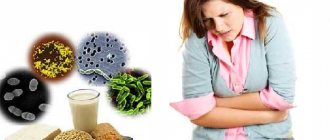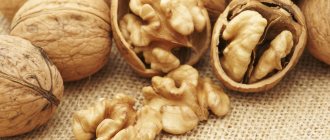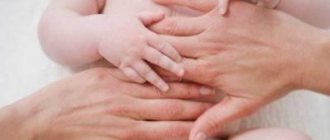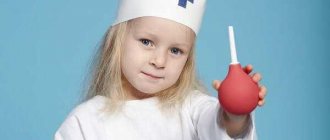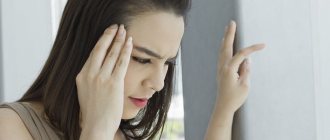Diagnosis of diarrhea
Diarrhea in a child most often occurs due to an intestinal infection.
According to medical practice and scientific research, the human digestive system is fully formed before the age of 10.
At this age or a little younger, children normally have stools of normal consistency and regularity up to 2 (less often - 3, for the youngest - 5) times a day.
A change in the frequency of bowel movements or the usual form of stool is a clear disturbance of the digestive process, the most dangerous of which is diarrhea.
Diarrhea or, scientifically, diarrhea is an increase in bowel movements 3 or more times per bowel movement, accompanied by a watery form of stool. Often this pathology occurs with pain in the abdomen and anal incontinence. The main causes of diarrhea in young children are:
- intestinal infection;
- staphylococcal microflora in the gastrointestinal tract;
- salmonellosis;
- hepatitis;
- temporary stomach upset.
It is very important to determine the exact cause of diarrhea in a child, since it is with this in mind that the correct therapeutic process is organized. In addition, treatment of diarrhea is an urgent measure, since this kind of pathology is often accompanied by fever and fever, and can also cause severe dehydration.
As you can see, correct diagnosis of the cause of diarrhea is very important. But how to do it? The answer is simple - by analyzing the baby’s condition and the color of his stool, if diarrhea can be called that. Typical causes of diarrhea include the following:
- With an intestinal infection, there is foam in the diarrhea and an increase in temperature.
- When infected with staphylococcus, the stool is green and an elevated temperature is also observed; a febrile state rarely develops.
- With salmonellosis, the stool has a swamp color and there is always an elevated temperature.
- With hepatitis - only white diarrhea.
With a general and, as a rule, temporary disorder of the gastrointestinal tract, defecation is often very frequent and the color of stool does not deviate much from the norm, temperature and fever are not observed.
Symptoms of diarrhea in children
The main symptom of diarrhea is thinning and frequent bowel movements in a child. It becomes unformed and watery.
Diarrhea in childhood may be accompanied by symptoms such as:
- Bloating.
- Rumbling in the stomach.
- False urge to empty the bowels.
- Enhanced gas separation.
- Lack of appetite.
- Sleep disorders.
- Nausea and vomiting.
- Anxiety, tearfulness.
These symptoms do not always accompany diarrhea. However, the more there are, the more severe the course of the disease.
If a child develops an intestinal infection or food poisoning, mucus and undigested food particles will be present in the stool. In severe cases of the disease, blood may appear.
An increase in body temperature due to diarrhea is a very common companion to intestinal infections and food poisoning.
If a child develops diarrhea that is not accompanied by a hyperthermic reaction, then it may indicate errors in nutrition, dysbiosis, allergies or a parasitic infection. It is possible that the child is simply teething.
Treatment of diarrhea with medications
Smecta is a drug for normalizing intestinal microflora.
So, let's say you have identified the reason for your child's frequent bowel movements. What should you do next? First of all, give your child bed rest, easy access to the toilet, and plenty of fluids.
After this, begin treatment directly, taking into account the cause of diarrhea. The following list serves as typical medications for the treatment of diarrhea of any etiology:
- All glucose-saline solutions, which reduce the possibility of dehydration of the child’s body to a minimum. This product is prepared by preparing Regidron powder. The latter is diluted with water, according to the instructions for the drug, after which the resulting drink is drunk by the child until diarrhea is completely relieved. The optimal amount of product is selected taking into account the age of the child. So, for 1-4 month old children the norm is 200 grams, for 4-12 - 400-500 grams, 1-2 year olds - 600-800 grams, 2-5 year olds - no more than 900 grams, for other ages - from 900 liters, but not more than 2 liters.
- All types of sorbents that can normalize the microflora of the gastrointestinal tract by removing toxins, microbes and pathogenic viruses. The sooner you start using sorbents, the greater the chance of curing diarrhea in the shortest possible time. These drugs are used only according to the instructions. Among the most effective sorbents are activated carbon, Filtrum, Enterosgel and the well-known Smecta. Note that sorbents are an integral part of the treatment of diarrhea, so they are used for children over several months old.
- Most probiotics and prebiotics necessary to consolidate the effect of the sorbents taken. These drugs are selected according to the age of the child and are also used strictly according to the instructions. As a rule, the course of therapy with priobiotics and prebiotics is about 5-10 days, but no more. Today, to get rid of childhood diarrhea, probiotics are most often used - Bifiform Baby, Bifidiumbacterin, and prebiotics - Hilak Forte, Eubicor.
Depending on the characteristics of a particular case, the above list of medications may be supplemented. So, for example, for an infectious cause of diarrhea, anti-infective drugs are used, and for a general weakening of the immune system of a sick baby, immunostimulants are used.
The most effective course of therapy can be selected exclusively by a professional doctor, therefore, if a child has diarrhea, especially a small one (under 2 years), it is better to visit a clinic rather than self-medicate.
Folk remedies and general principles for getting rid of diarrhea
Rice water is a folk remedy for diarrhea.
If we consider the treatment of childhood diarrhea in more detail, it is worth noting that with this pathology it is simply unacceptable. Such actions include:
- consumption of sweet teas and juices;
- eating dairy products and foods that irritate the gastrointestinal microflora (fatty, spicy, smoked and similar foods);
- use of antibiotics for therapy (these drugs should be taken only as prescribed by a doctor, otherwise they can worsen the course of the pathology).
In addition, taking medications should be supplemented with the use of traditional medicine that will help overcome diarrhea. Among them it is worth highlighting the following:
- Rice water. Perhaps one of the most effective folk remedies for getting rid of diarrhea. Prepare by standard cooking rice and straining the broth. Depending on the age of the child, he should be given from 50 to 300 grams of decoction for each day of diarrhea.
- Drinks made from rose hips are naturally natural, but not sweet. Prepared using any technique known to you. Rosehip is useful because it has a positive effect on the gastrointestinal mucosa from all angles, as it has sedative, anti-inflammatory and immunostimulating properties.
- Vitamin teas with a little sugar. This remedy will prevent dehydration and tone the child’s sick body.
It is better not to resort to the use of other folk remedies, since their effect has not been tested in practice. As for the provisions presented above, they are often recommended even by professional doctors.
In any case, do not forget that traditional medicine is not the basis for the treatment of diarrhea, but only a good help to it.
Review of antidiarrheal drugs for children
What can you give your child for diarrhea? Stool upset quite often becomes a consequence of the development of dysbiosis - a condition accompanied by an imbalance of intestinal microflora. That is why probiotics are prescribed for use. The medications contain strains of live bifidobacteria and lactobacilli, which compensate for their deficiency. As a result, the child’s stool returns to normal and the bloating goes away.
Lactobacterin
It contains only natural ingredients, so Lactobacterin is approved for use from the moment of birth. Indications for use: disruption of the digestive process after taking antibiotics or as a result of food allergies, accompanied by stool disorders. It has several forms - powder, suppositories and tablets.
Linex
Linex is one of the popular drugs from the group of probiotics. Contains enterococci and lactose. An infant can be given one capsule per day. Children aged 1...12 years should receive three capsules.
Bifidumbacterin
The product contains live bifidobacteria. Bifidumbacterin is offered in several formats. This:
- suppositories;
- powder for preparing a drink;
- capsules.
The capsule drug can be given to children after 4 years of age. Until this time, powder is used in the treatment process.
Bifiform
It not only helps stop diarrhea and normalize the digestive process, but also strengthens the baby’s immune defense. Available in the form of drops - used to treat infants - and chewable tablets with orange and raspberry flavors. The latter are used in children over 3 years of age.
Important! Bifiform is recommended to be prescribed only for acute diarrhea. They are not suitable for the treatment of chronic diarrhea.
The next group of antidiarrheals are drugs that slow down intestinal motility. In childhood, they are allowed to be drunk only as prescribed by a doctor. Drugs in this group cannot be used if diarrhea is of bacterial origin or the person does not receive adequate therapy for the condition.
Medicines that slow down gastrointestinal motility should only be given to children after prior consultation with the attending physician.
In this case, as a result of slowing down the contractile activity of the intestine, pathogenic microorganisms and their waste products will accumulate in it. The result is a deterioration in general health and increased diarrhea.
Loperamide
Folk remedies for diarrhea
The active ingredient is loperamide hydrochloride. The fixing effect of Loperamide is due to a decrease in the motor activity of the gastrointestinal tract (gastrointestinal tract), which leads to a slower passage of the food coma.
While taking the medicine, there is a decrease in the number of urges to defecate. It starts working almost immediately after taking the capsule. Duration of action – 4…6 hours.
Loperamide can be used after the child is 12 years old. During the period of 6...12 years, it can be used to stop diarrhea only as prescribed by the attending physician, since the drug can cause dehydration of the body.
Imodium
The active ingredient of the product is loperamide. The medicine also slows down the contractility of the gastrointestinal tract. Presented in lozenges, which makes them much easier to take. Imodium is prohibited for use in children under 6 years of age. At the age of 6...12 years - prescribed with caution. After 12 years, an adult dosage is used.
It is impossible to cure diarrhea caused by severe intestinal infections without the use of antibacterial agents. Drugs in this group should be selected by the attending physician, based on the results of the child’s studies. Its signs are an increase in body temperature, the appearance of blood, mucus or purulent inclusions in the stool.
Furazolidone
It is an antibacterial drug with antiprotozoal properties. Effective for diarrhea caused by:
- food poisoning;
- dysentery;
- enterocolitis;
- salmonellosis.
Important! The dosage is calculated individually based on the child’s weight.
Available in two forms - tablets and granules for suspension. The antibiotic is approved for use starting from 3 years of age. The next medicine that can and should be given to a child for diarrhea is enterosorbents. Drugs in this group help remove all toxic substances from the body.
Enterosorbents are especially effective if diarrhea was caused by food poisoning
Enterosgel
The drug contains silicon. Enterosgel is offered in the form of a gel, which simplifies its administration. Dosage for an infant – ½ tsp. per day. The portion must be divided into several doses. Children aged 1...5 years should take ½ tsp. three times a day. Teenagers can receive 1 tbsp. l. three times a day.
Smecta
The product is presented in the form of a powder packaged in a sachet. To prepare a single dose, the contents of the sachet must be dissolved in clean water (50 ml). If the child refuses the medicine, it can be added to any dish or compote can be used instead of water.
Dosage for children of the first year of life – 2 sachets per day. As you grow older, the norm increases to 4 sachets per day. The drug Neosmectin can be considered as a substitute for Smecta. It has similar properties, but has a more pleasant taste.
Phosphalugel
The medicine has not only adsorbing, but also enveloping properties. Phosphalugel is an effective and safe product, therefore it is approved for use in children of the first year of life. For infants under 6 months of age, a justified single dose is 4 grams of powder. Up to six doses per day are allowed. After the baby is six months old, he can be given 8 grams after each feeding.
Polysorb
Enterosorbent is used for diarrhea caused by allergic and infectious lesions. Available in powder form. When calculating the dosage, the baby’s weight is taken into account:
- less than 10 kg – ½ tsp per 50 ml of liquid (daily value);
- 11…30 kg – 1 tsp. 50 ml of water three times a day;
- more than 30 kg – 2 tsp. three times a day.
Before starting to take enterosorbents, you must ensure that there are no contraindications. The simplest option for drugs in this group is activated carbon. But its effectiveness is much lower when compared with more modern means.
An obligatory stage in the treatment of childhood diarrhea is the restoration of water-salt balance. This is especially important if diarrhea continues for more than two days and is accompanied by vomiting. Rehydration medications should be taken after the first loose stool, without waiting for dehydration to develop. Its signs:
- retraction of the fontanelle, eyes;
- the child stops urinating;
- mucous membranes become dry.
Regidron
It contains sodium salts, dextrose and potassium. To prepare the solution, 1 sachet of the product must be mixed with 250 ml of warm water. This is the daily norm, which the baby needs to drink little by little throughout the day.
Hydrovit forte
Another rehydrant approved for use in childhood. Contains potassium, sodium salts and dextrose. Preparation instructions: use one packet of powder per glass of water or warm tea.
Gastrolit
This rehydration formula contains glucose, potassium and sodium chloride, chamomile extract and sodium bicarbonate. Warm water (250 ml) is used to dissolve the powder. You can prepare your own rehydration solution.
To do this, you need to dissolve 2 tbsp in 1 liter of warm boiled water. l. granulated sugar and 1 tsp. soda and salt. If it is not possible to use antidiarrheal medications, then you can try to secure the child’s stool using improvised means.
Strong tea helps stop diarrhea
